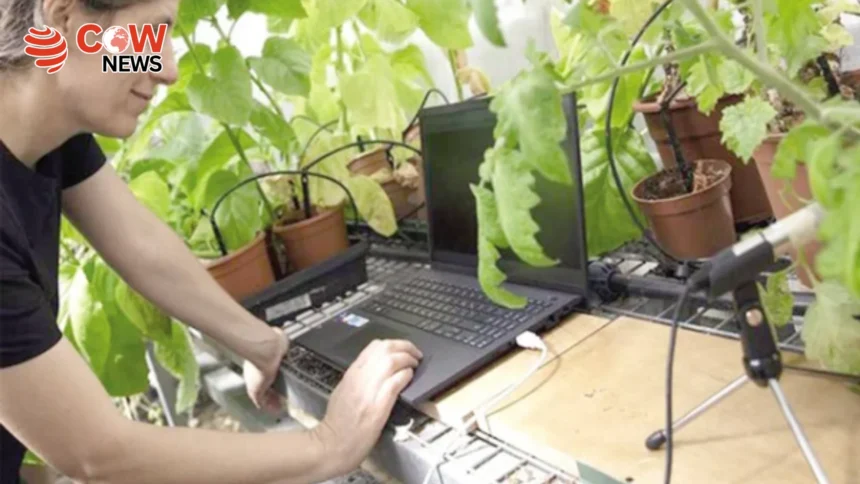LAHORE( The COW News Digital )A groundbreaking discovery by Tel Aviv University has revealed that plants emit high-frequency sounds when deprived of water — a phenomenon that may revolutionize our understanding of plant communication and interspecies interaction.
Led by Professor Hilda Unieme, the research team found that stressed plants, particularly during water scarcity, produce microscopic air bubbles within the xylem — the plant’s internal water transport system. These bubbles burst, generating ultrasonic sounds that are undetectable to the human ear but audible to certain insects and animals.
“In a well-hydrated plant, only about one bubble is formed per minute. But under drought conditions, the rate increases to 30 or even 40 bubbles per minute,” Professor Unieme explained. These tiny explosions emit high-frequency sounds, effectively functioning as distress calls in the plant kingdom.
Interestingly, the study found that insects like moths and herbivores such as deer respond to these distress signals. Moths, for instance, tend to avoid laying eggs on dehydrated plants, sensing that the host may not support the survival of their larvae. Similarly, herbivores are less likely to graze on plants emitting such signals, instinctively recognizing the plant’s poor water condition.
The research points to an extraordinary natural mechanism, suggesting that nature has equipped insects and animals with the ability to distinguish between healthy and stressed plants using sound alone.
“These findings challenge the traditional notion that plants are passive organisms,” Unieme noted. “They are responsive and communicative in ways we are just beginning to understand.”
This discovery adds a fascinating layer to the complexity of ecological systems, showing how non-verbal communication exists across species and kingdoms. It also opens new possibilities in agriculture, where monitoring ultrasonic emissions could help farmers detect crop stress before visual signs appear, allowing timely irrigation and potentially increasing yield.
The study has sparked global interest and further investigations are already underway to explore how these plant-generated sounds can be translated into usable data for smart farming technologies.
What was once considered silent life may, in fact, be echoing with cries for survival — we just weren’t listening.







